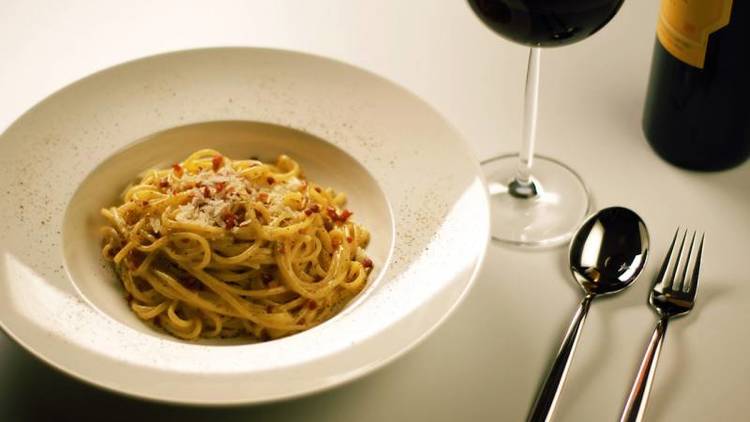


One thing about Roman cuisine: it cuts to the chase, presenting heavy, flavorful dishes that fill you up. That explains, at least in theory, why there aren’t specifically Roman appetizers. That said, over time many traditional products were transformed into appetizers, like meat and cheese platters or pork and grilled vegetables.
Fried food deserves its own category here. Broccoli, mozzarella in carrozza and squash
blossoms are just some of the food products that in Lazio are traditionally fried in extra-virgin olive oil and served before the main course as fritti misti alongside the more traditional artichokes and zucchini.
But the food most commonly associated with Italy is pasta— it’s almost a stereotype, a bit like rice is with China. There are literally hundreds of varieties of pastas and pasta sauces from region to region.
In Rome and Lazio, the following are the most popular hands- down. Even if you’ve tried them in restaurants in New York, Paris or London, you’ll never know how they really taste until you’ve had them in Rome!
Amatriciana and Gricia
Originating from Amatrice, a small village in Lazio, and, according to some, a more modern version of “gricia,” i.e., pasta amatriciana without tomatoes, which were not added to the recipe until the end of the 19th century. The original recipe calls for placing slices of guanciale in an iron pan, frying them in olive oil, adding hot pepper flakes and red wine that, once evaporated, blends with the sauce as it slowly cooks, and finally garnishing with salt and pepper. “Gricia” has the same provenance and was originally conceived for shepherds from Amatrice who ate it all the time because its ingredients— spaghetti, guanciale, pecorino, lard, black pepper and salt— were easy to find.
Cacio e pepe
Cacio e pepe has just three ingredients: pasta, pecorino romano and pepper. The trick
to making cacio e pepe is simply in using the right portions and making sure it’s good and creamy. Whatever you do, resist the temptation to add oil or butter. It, too, was originally peasant food for shepherds who travelled from one area to another carrying basic cooking supplies that lasted a long time.
La Carbonara
Carbonara, so called for being the preferred dish of coal workers (carbonai in Italian), is a fairly simple sauce to make. All you need is guanciale, eggs, pecorino, pepper and oil. It
is always, however, paired with wine—red or white. Often the wine comes from the vineyards around Castelli Romani.
Source URL: http://newsite.iitaly.org/magazine/dining-in-out/articles-reviews/article/abc-popular-roman-cuisine
Links
[1] http://newsite.iitaly.org/files/popularromancousine1452900587jpg